Chefchaouen – den blå byen
Den blå byen i Marokko – Chefchaouen
Chefchaouen, ofte kalt Chaouen av lokalbefolkningen, er Marokkos ikoniske blå by, kjent som «Den blå perlen.» Byens blåmalte bygninger og sjarmerende smale gater, har lenge fascinert reisende fra hele verden. Før mitt besøk hadde jeg sett utallige bilder av de magiske blå gatene, i bøker, balder og på sosiale medier og lest om den unike atmosfæren.
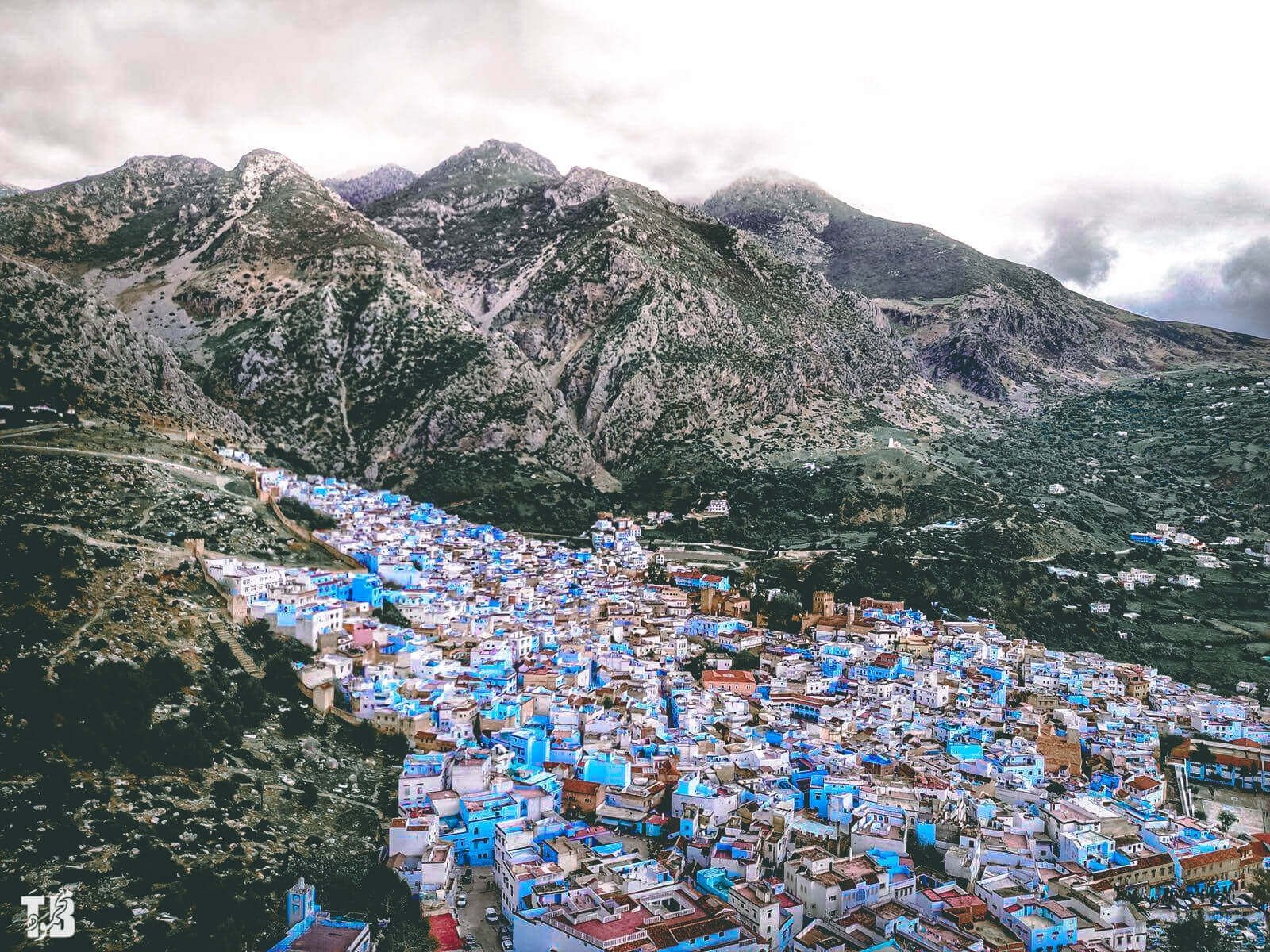
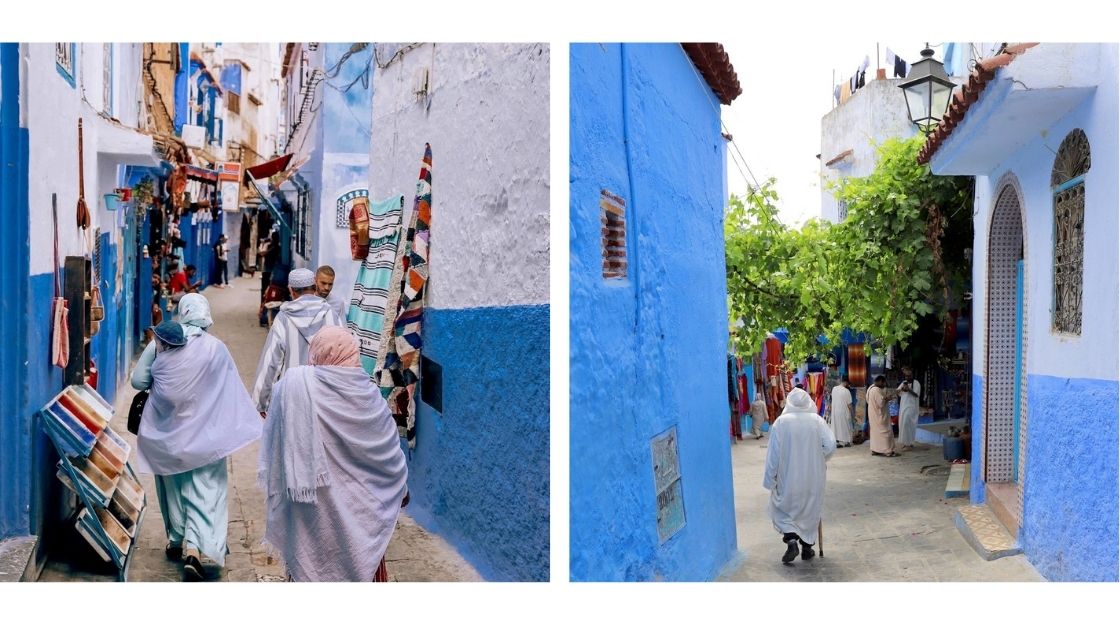
Den blå byen i Rif-fjellene
Det er i Rif-fjellene, nord i Marokko, denne spesielle, lille byen ligger. Byen ble grunnlagt i 1471 av jøder og maurere som flyktet fra Spania. Navnet Chefchaouen stammer fra det berbiske uttrykket som betyr «utsikt mot toppene,» inspirert av fjelltoppene som omgir byen, som minner om to horn, eller «chaouen.» Bildet er det @photographerchefchouen som jeg kom i prat med, som har tatt.
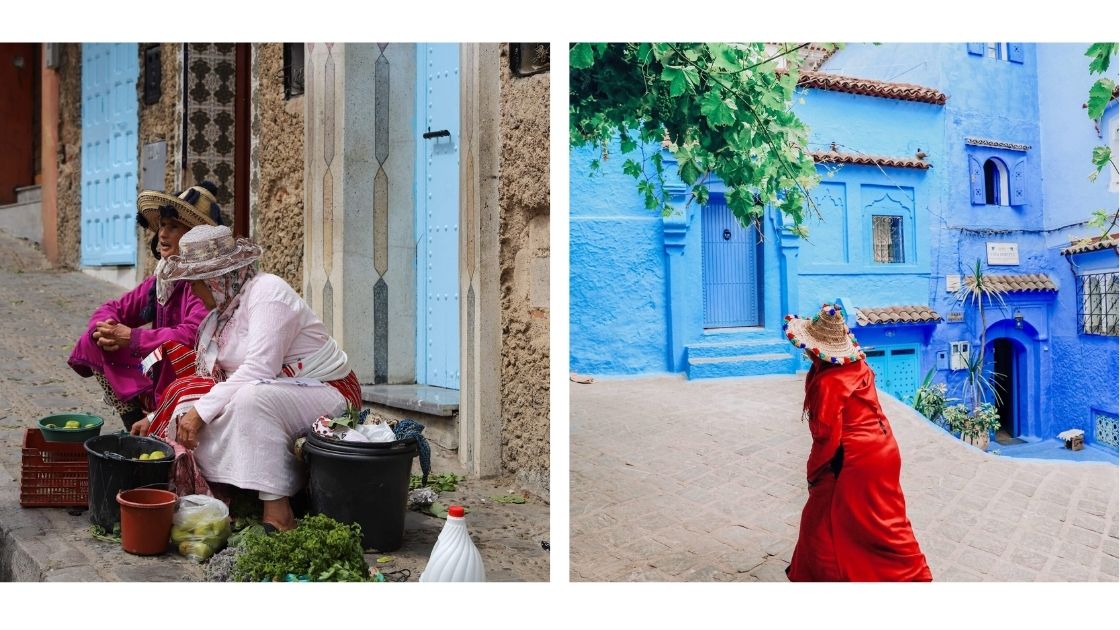
Ting å gjøre i Chefchaouen
Chefchaouens gamleby, også kjent som medinaen, er en labyrint av trange smug og bratte steintrapper. Hvert hjørne av medinaen skjuler noe vakkert – fra forseggjorte døråpninger og intrikate flisarbeider til dekorative fontener. Her i medinaen er det mye å se og gjøre, alt fra hyggelige restauranter til butikker å handle i. Pruter du på prisen, husk å gjør det med et smil og på en høflig måte.
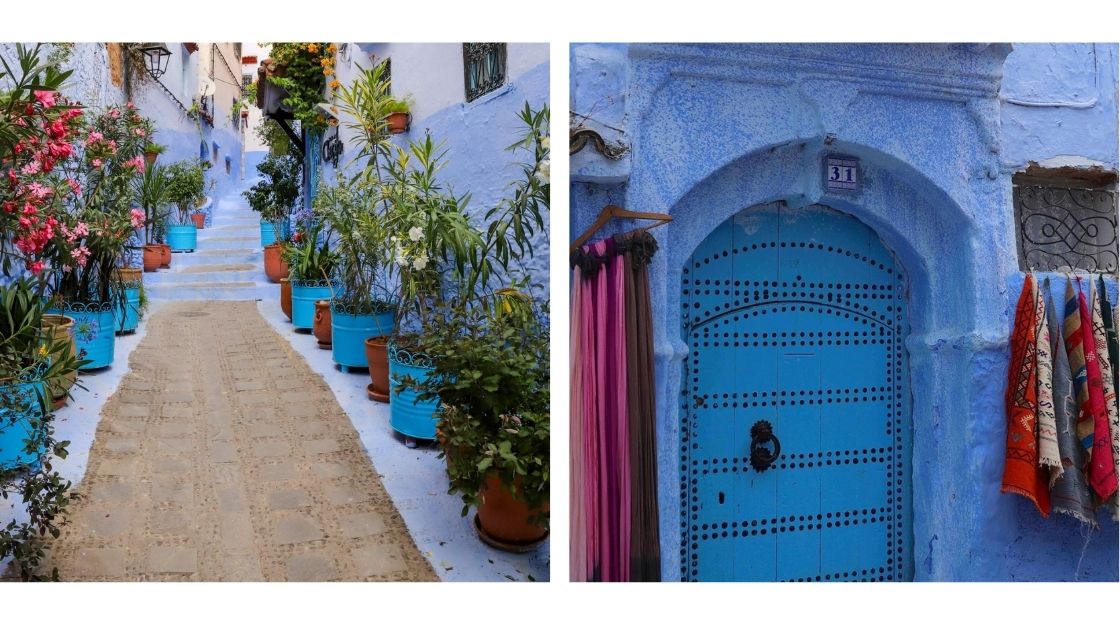
Markeder for krydder, fargestoffer, vesker og tepper
Medinaen er et sanseopplevelse, hvor duften av krydder, røkelse, nybakt brød og sitrus fyller luften fra de lokale markedene. Her kan du handle håndlagde tepper, skinnvarer og tradisjonelle marokkanske tekstiler, og utforske soukene som byr på ferske råvarer og unike krydder.
Chefchaouen er unik- jeg dro dit alene, og det var en stor opplevelse å gjennom de blåmalte gatene. I tillegg til at hele byen er malt blå, er det meste annet også fargerikt, fra tekstiler til fargestoffer. Legg merke til sekkene med fargepulver i rødt, gult, blått og grønt. Disse pigmentene, brukt til fargestoffer og kunst, gjenspeiler Marokkos rike kulturarv.
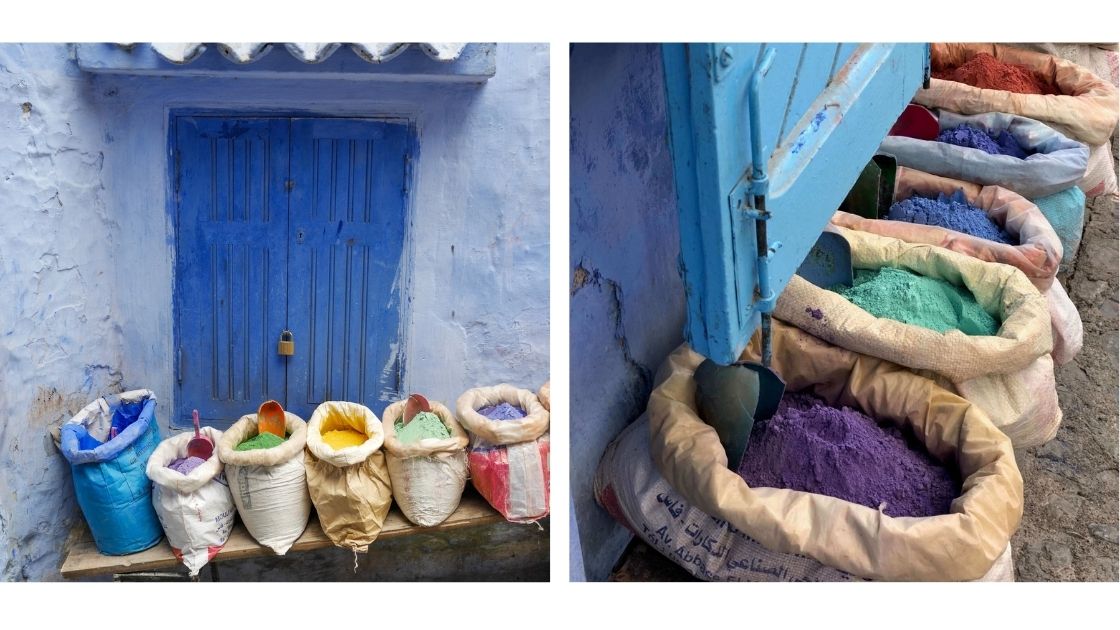
Den spanske moskeen, Ras El Maa og Kashbah
For fantastiske panoramautsikter over byen ved solnedgang, anbefales en tur til den spanske moskeen, som ligger på en høyde rett utenfor medinaen. I nærheten finner du også Ras El Maa-fossen, et fredelig sted for en avkjølende pause mens du nyter naturen i Rif-fjellene. Byens mest kjente landemerke er ikke blått. Den historiske Kasbah-festningen fra 1400-tallet står i byens hovedtorg. Denne andalusisk-inspirerte festningen ble opprinnelig bygget for å forsvare byen mot invasjoner. I dag huser den et museum som gir innsikt i Chefchaouens historie og kulturarv.
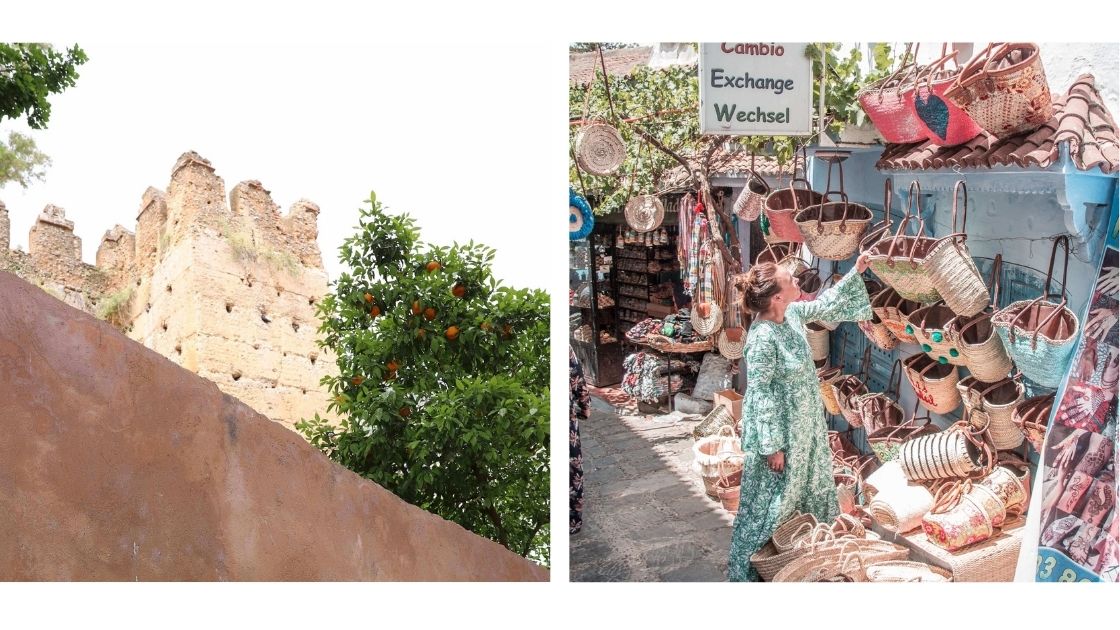
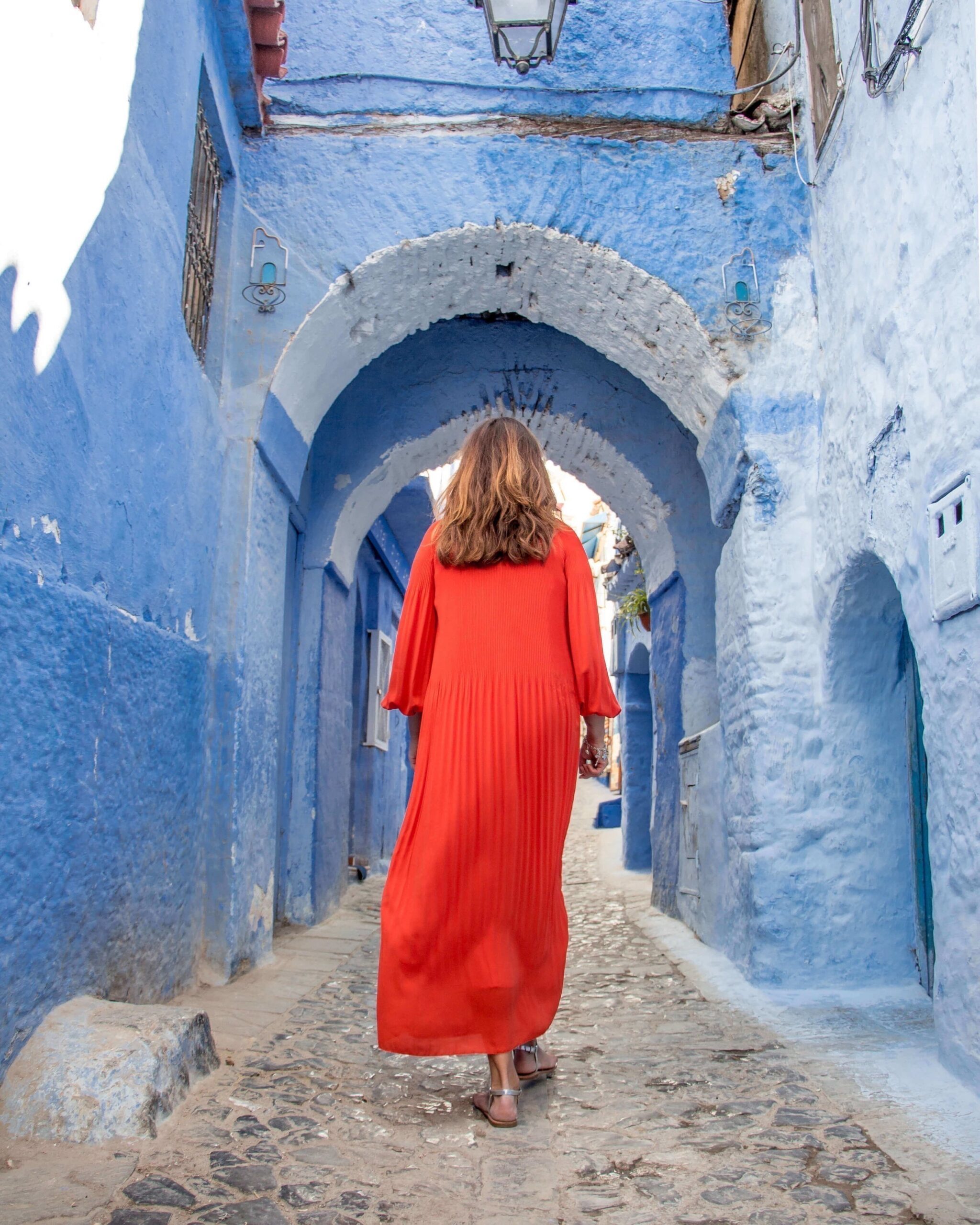
Katter og hammam i Chefchaouen
Et besøk til en tradisjonell marokkansk hammam i Chefchaouen er en autentisk måte å oppleve den lokale kulturen på. Etter en lang dag i fjellbyen er det herlig å slappe av med damp og en revitaliserende skrubb. Chefchaouen, den blå byen, er også kjent som kattenes by. Det er et stort antall løskatter som streifer rundt i de blå gatene. Kattene bidrar til byens unike karakter og er en glede for både dyreelskere og fotografer, men som «kattemamma» selv, synes jeg synd på kattene her som ikke har et hjem.
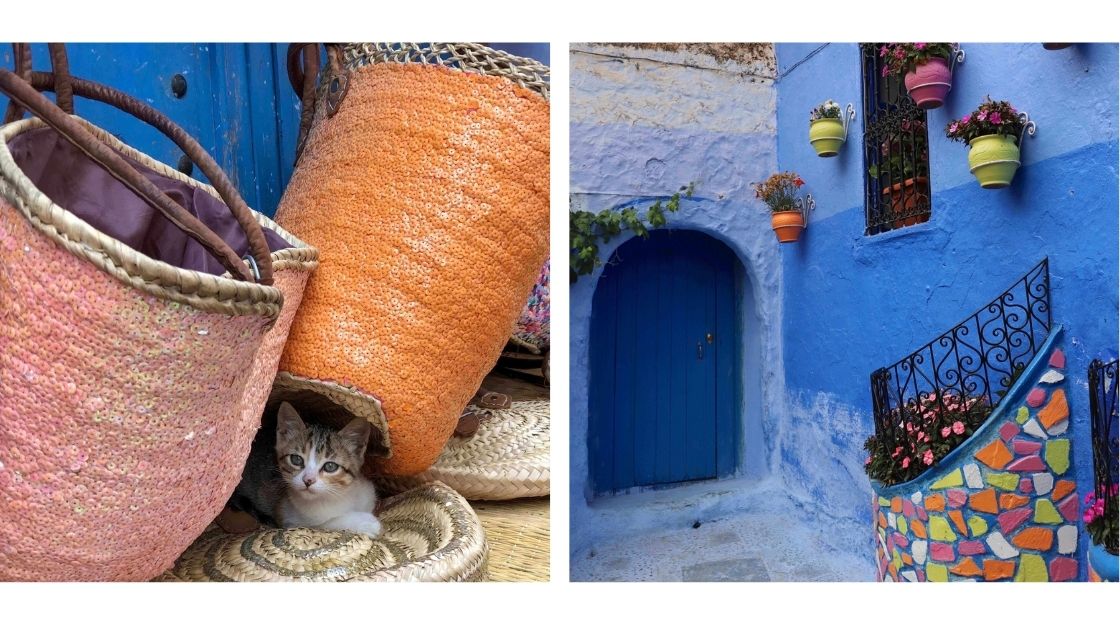
Hvorfor er Chefchaouen malt blå?
Chefchaouens blåmalte bygninger har vært et mysterium i generasjoner. Noen mener at fargen stammer fra jødiske flyktninger på 1400-tallet, som malte kvartalet sitt blått som en hyllest til Gud. Uansett opprinnelse er de blå veggene byens signatur og et symbol på fred og beskyttelse.
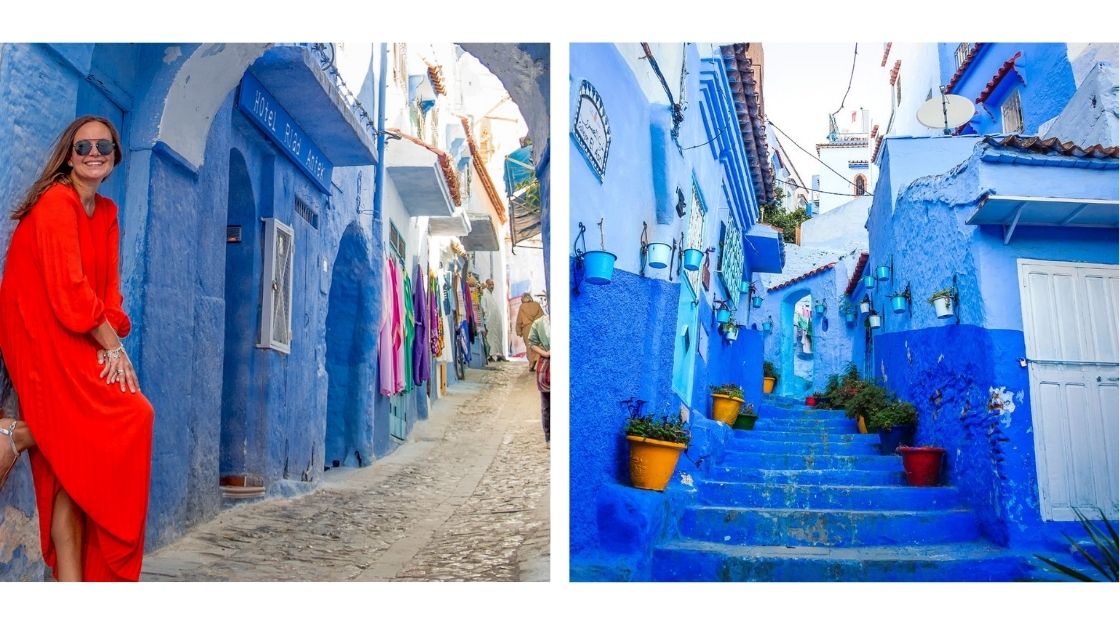
Hotelltips Chefchaouen
Jeg bodde på Lina Ryad & Spa, en hyggelig riad midt i Chefchaouens Gamleby. Riaden hadde romslige suiter, terrasse med utsikt og et spa. Et deilig sted å trekke seg tilbake.
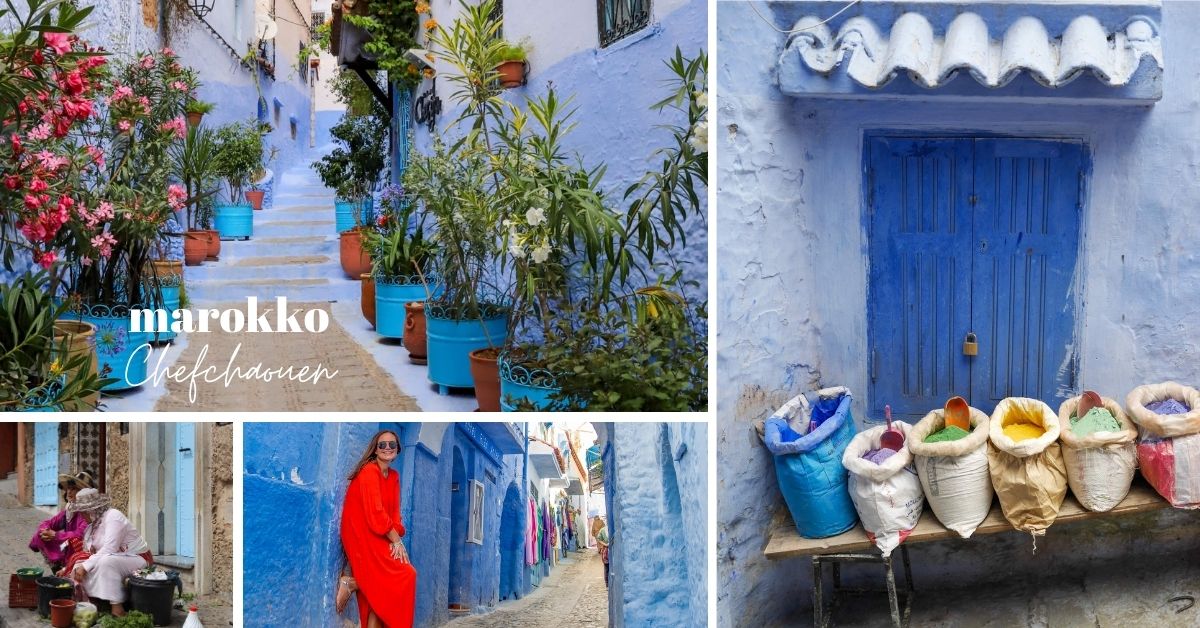
Afrika har mye spennende å by på. Jeg har reist til fem av disse landene og fått oppleve vinsmaking og pingviner i Sør-Afrika, Victoriafalls i Zambia, Tanzania med safari og Zanzibar, og Egypt med snorkling i Hurghada og Luxor – verdenshistoriens vugge.
Et annet kontinent, eller rettere sagt to, er byen Istanbul som er delt mellom Europa og Asia.
Har du lyst kan du følge @worldwithasuitcase på Instagram for reisetips hver dag.

